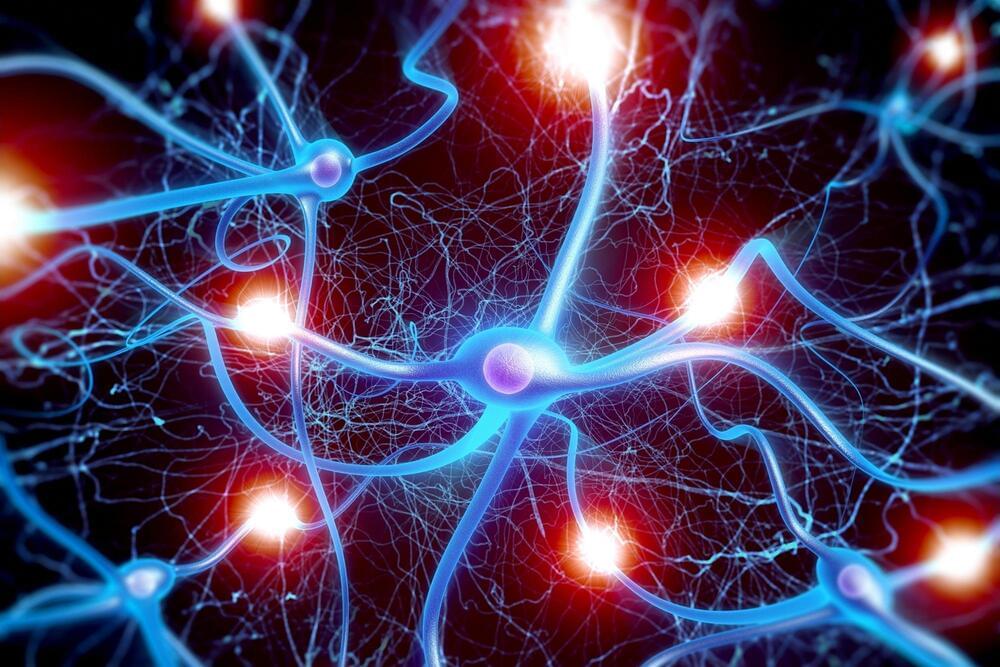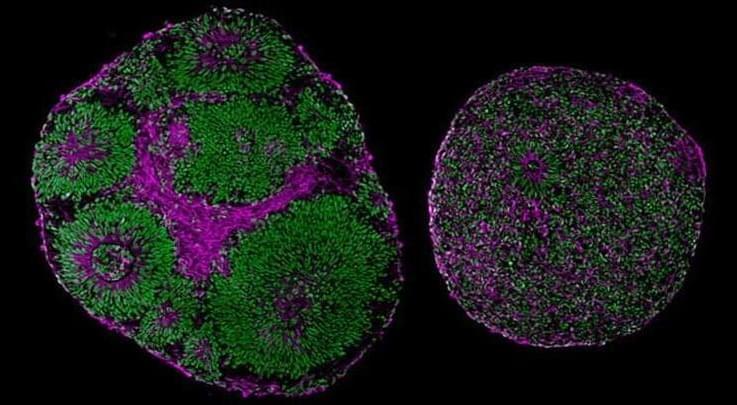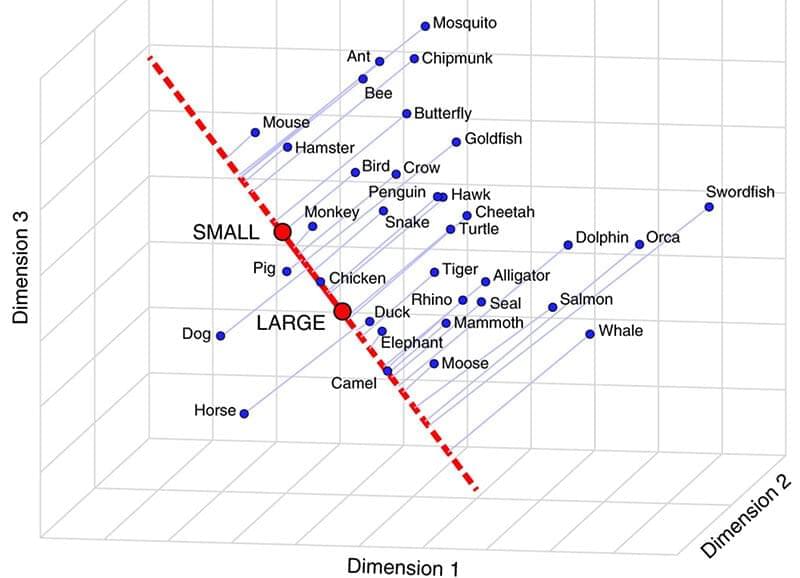Category: neuroscience – Page 773

Longevity Research is an Economic Necessity
It is vital to recognize the immediate economic importance of i nvesting in longevity and healthy-aging sciences.
Aging itself is a complex series of at least 300 biological processes involving more than 10% of our genetic makeup. It follows that methods to combat these effects must be a combination of sciences, from biotech to biophysics and pharmaceuticals. There is no single “silver bullet” solution.
Aging, along with the physical and mental decay that accompanies it, is still widely regarded as a natural and inevitable thing. It is not, it is a degenerative disease in which the physical integrity and structure of our cells decay each time they divide to replace old ones or as part of any healing process.
Scientists engineer a bacteria to produce a drug used to treat Parkinson’s disease
The results of the study could lead to new treatment options. In a groundbreaking new study published in the journal Nature on Thursday, researchers have compared the brain cells of patients who had died from either Parkinson’s disease or dementia to people unaffected by the disorders and found which brain cells are responsible for both conditions.
A team of researchers has created a bacteria that can produce a steady and consistent source of medicine inside a patient’s gut, suggesting the possibility for genetically edited bacteria to be an efficient Parkinson’s disease treatment.
Moreover, the researchers have shown via preclinical experiments that the novel treatment technique is not only safe and well-tolerated, but it also reduces side effects that can occur when other treatments are utilized.
An engineered probiotic
For long, scientists have been experimenting with ways of engineering bacteria to fit our needs for decades. The new research is the latest example of that.

Neuronal Plasticity: Scientists Show How Chronic Pain Leads to Maladaptive Anxiety
Chronic pain is persistent and inescapable, and can lead to maladaptive emotional states. It is often comorbid with psychiatric disorders, such as depression and anxiety disorders. It is thought that chronic pain causes changes in neural circuits, and gives rise to depression and anxiety.
Researchers at Hokkaido University have identified the neuronal circuit involved in chronic pain-induced anxiety in mice. Their research, which was published on April 27, 2022, in the journal Science Advances, could lead to the development of new treatments for chronic pain and psychiatric disorders such as anxiety disorders and major depressive disorder.
“Clinicians have known for a long time that chronic pain often leads to anxiety and depression, however the brain mechanism for this was unclear,” said Professor Masabumi Minami of the Faculty of Pharmaceutical Sciences at Hokkaido University, the corresponding author of the paper.
Elon Musk’s Neuralink rival Synchron starts human trials of implants
Elon Musk’s Neuralink rival Synchron has begun human trials of its brain implant that lets the wearer control a computer using thought alone.
The firm’s Stentrode brain implant, about the size of a paperclip, will be implanted in six patients in New York and Pittsburgh who have severe paralysis.
Stentrode will let patients control digital devices just by thinking and give them back the ability to perform daily tasks, including texting, emailing and shopping online.
Children of Time: How Far Does Evolution Go?
In this video we discuss, Science Fiction book, “Children of Time” By Adrian Tchaikovsky. It’s the best book I’ve read this year by a long shot! It’s about evolution, consciousness, humanity’s future, and more! Also SPIDERS!
Music: Planet Gammu by Jamez Dahl.
Art:
https://www.adammiconi.com/artwork/fantasy-art/
https://cdnb.artstation.com/p/assets/images/images/010/889/3…nia-x5.jpg.
https://www.artstation.com/artwork/v2G1dD
https://www.artstation.com/artwork/alien-spiders.
https://www.artstation.com/artwork/oOZy6q.
https://www.deviantart.com/macarious/art/super-serious-Scientist-812305030
FOLLOW QUINN ON TWITTER: Twitter: https://twitter.com/IDEASOFICE_FIRE
Three-Body Playlist: https://youtube.com/playlist?list=PLRXGGVBzHLUfIzEhovpQJ2ENiNvJoOD2A

Lab-Grown Brain Experiment Reverses The Effects of Autism-Linked Gene
Scientists have uncovered changes in neurological structure that could underlie the autism spectrum disorder known as Pitt Hopkins syndrome, thanks to the help of lab-grown brains developed from human cells.
Furthermore, the researchers were able to recover lost genetic functions through the use of two different gene therapy strategies – hinting at the possibility of treatments that could one day give those with the condition new options in improving their quality of life.
Pitt Hopkins syndrome is a neurodevelopmental condition stemming from a mutation in a DNA-management gene called transcription factor 4 (TCF4). Classed on the autism spectrum on account of its severe impact on motor skills and sensory integration, it’s a complex condition that presents with a range of severities.

Language processing programs can assign many kinds of information to a single word, like the human brain
From search engines to voice assistants, computers are getting better at understanding what we mean. That’s thanks to language-processing programs that make sense of a staggering number of words, without ever being told explicitly what those words mean. Such programs infer meaning instead through statistics—and a new study reveals that this computational approach can assign many kinds of information to a single word, just like the human brain.
The study, published April 14 in the journal Nature Human Behavior, was co-led by Gabriel Grand, a graduate student in electrical engineering and computer science who is affiliated with MIT’s Computer Science and Artificial Intelligence Laboratory, and Idan Blank Ph.D. ‘16, an assistant professor at the University of California at Los Angeles. The work was supervised by McGovern Institute for Brain Research investigator Ev Fedorenko, a cognitive neuroscientist who studies how the human brain uses and understands language, and Francisco Pereira at the National Institute of Mental Health. Fedorenko says the rich knowledge her team was able to find within computational language models demonstrates just how much can be learned about the world through language alone.
The research team began its analysis of statistics-based language processing models in 2015, when the approach was new. Such models derive meaning by analyzing how often pairs of words co-occur in texts and using those relationships to assess the similarities of words’ meanings. For example, such a program might conclude that “bread” and “apple” are more similar to one another than they are to “notebook,” because “bread” and “apple” are often found in proximity to words like “eat” or “snack,” whereas “notebook” is not.

A conceptual framework for consciousness
This article argues that consciousness has a logically sound, explanatory framework, different from typical accounts that suffer from hidden mysticism. The article has three main parts. The first describes background principles concerning information processing in the brain, from which one can deduce a general, rational framework for explaining consciousness. The second part describes a specific theory that embodies those background principles, the Attention Schema Theory. In the past several years, a growing body of experimental evidence—behavioral evidence, brain imaging evidence, and computational modeling—has addressed aspects of the theory. The final part discusses the evolution of consciousness. By emphasizing the specific role of consciousness in cognition and behavior, the present approach leads to a proposed account of how consciousness may have evolved over millions of years, from fish to humans. The goal of this article is to present a comprehensive, overarching framework in which we can understand scientifically what consciousness is and what key adaptive roles it plays in brain function.

The Tesseract: between mediated consciousness and embodiment
Abstract
As a sensate infrastructure, the body conveys information to and from the brain to complete a perceptual concordance with consciousness. This system of reciprocal communication both positions consciousness in spacetime, and allows that consciousness is dependent upon the body to roam. Through movement we comprehend. The corporeal occupation of spacetime permits human consciousness access to the phenomena of its physical environment, whereby it uses language (utterance) to both construct and describe this existence. This mediated transmission evolved into story and narrative in an attempt to apprehend, control and more importantly convey what is perceived. It is precisely the components of space and time, critical elements to our own existence that play such a paramount role in our ability to generate meaning and narrative comprehension. As our dimensional understanding has evolved and extended, so too has our understanding that space and time are crucial components of narrative. With the emergence of auxiliary narrative spaces, this movement of consciousness affords opportunities to create new narrative imperatives. In the theoretical realm of physics, the tesseract makes it possible to overcome the restraints of time. The tesseract is a gravitational wormhole that represents the physical compression of space that circumvents time in order to move from one location in spacetime to another. The index, as part of the body, but also the mechanism for applying a collapsed signification, requires both utterance (mediation) and event (temporal-frame) in order to create cognitive meaning. The indexical functions as a linguistic tesseract that collapses language creating a bridge over the semantic divide between utterance and meaning. This paper places the function and potential of the tesseract within the paradigm of cognitive narratology through the argument that compression is the mechanism for narrative construction of story, autopoiesis, and the locality of self.